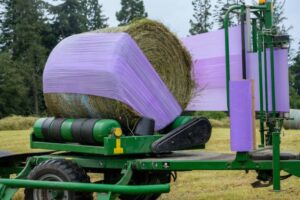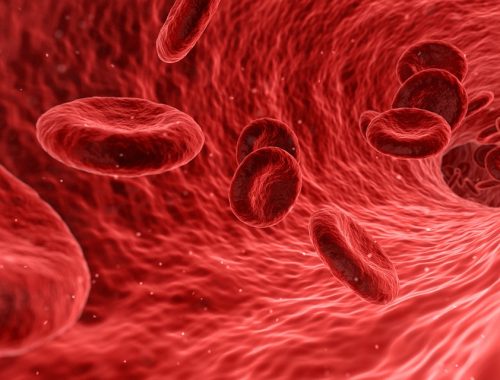Silage Plastic: Preserving Your Forage With Silage Plastic
Silage plastic can make all the difference between successfully preserving and feeding your forage, or having it completely spoil. A quality product requires little maintenance, blocking out oxygen, air and moisture penetration into your forage.
NetWrap silage plastic that meets all these criteria also comes with an added advantage – complete recycling capabilities. This feature is particularly important in today’s global environment of labour and raw material shortages.
Moisture Control
 Silage plastic is made of multi-layered film designed specifically to be bale wrapped. Its multi-layer technology ensures it keeps strong adhesion, seals well during storage and feeding and protects feed against environmental damage while simultaneously increasing nutritional value and improving animal performance. Silage wrap can be used on dry or high moisture baling and protects feed against environmental damage – ideal for dry baling as well as high moisture baling applications.
Silage plastic is made of multi-layered film designed specifically to be bale wrapped. Its multi-layer technology ensures it keeps strong adhesion, seals well during storage and feeding and protects feed against environmental damage while simultaneously increasing nutritional value and improving animal performance. Silage wrap can be used on dry or high moisture baling and protects feed against environmental damage – ideal for dry baling as well as high moisture baling applications.
Silage wrap can protect bales from air exposure and, as a result, reduce spoilage and improve forage quality by keeping oxygen out and protecting its nutritional content and decreasing time needed to reach anaerobic conditions. Furthermore, it reduces mycotoxins produced during mold growth.
Silage wrap can help limit mycotoxins produced during fermentation by keeping oxygen out and restricting mold growth, thus helping minimise their production and exposure to animals. Silage wrap also keeps oxygen away, further diminishing mold’s ability to flourish, thus decreasing mycotoxins production and their associated health concerns.
To maintain proper air control, it’s essential that silage be covered at an optimal time. Covering round bales immediately after filling will reduce separation and help achieve a denser pack, while in concrete silos covering with tires weighted down will keep air out while also limiting spoilage.
UV Protection
When selecting NetWrap silage plastic to preserve your crop, UV resistance is of vital importance. This will protect against degradation during storage and feeding as well as reduce wasteful forage losses that would otherwise take up too much of both your time and money.
Select a blown stretch film with UV resistance and puncture and tear resistance; this will make wrapping bales much simpler and faster while protecting its integrity during application and handling processes.
Raw materials used in silage wraps and covers can impact their cost and performance. Lower quality raw materials could result in the film not stretching properly or losing its integrity after stretching – leading to airflow permeating into your silage and premature spoilage of it.
Puncture Resistance
Silage film helps protect crops meant for feeding livestock, protecting hay and straw bales from moisture, dirt, insects and other elements that could compromise its nutritional value and spoil its food source.
Permeability (OTR) is one of the key criteria in selecting an ideal silage wrap. A lower OTR value will increase its value; you’ll then make back your investment when harvesting and feeding livestock.
Puncture resistance is another essential quality of NetWrap silage plastic and offers farmers who value protecting their investments with silage plastic an excellent choice. High puncture resistance offers increased resilience against impact or other mechanical forces that could tear or rupture it, providing peace of mind that their investments remain safe.
Strength is another crucial aspect of silage wrap, which can be measured using its tensile strength or elongation index. As these values increase, so will its strength. Film with high tear resistance ensures stable use during use which prevents air, moisture, and oxygen from spoiling crops and is particularly helpful to farmers who wish to preserve harvests for as long as possible.
Recyclability
Plastic silage wraps are far more durable and efficient to use than their paper or tarp counterparts and make for faster bale wrapping or stacking operations. No breaks occur easily when wrapping bales or stacking them compared with traditional hay/straw covers which often rip or tear under windy conditions or on silos without walls.
Be mindful that not all plastics are equal when selecting your silage cover material; quality will directly influence its lifespan and durability. PVC may be suitable for cheap tarps due to its chemical resistance, however due to low UV protection PVC isn’t appropriate as a silage cover material; look instead for products made of polyethylene (PE) with higher concentration of stronger RPE layers for long-term durability and chemical resistance.
These films boast increased reinforcement, enabling them to stretch over larger areas of a bale and provide superior performance and longevity compared to unreinforced PE covers. When selecting NetWrap silage plastic for your farm, opt for reinforced materials with 5 or 7 layers constructed. This will guarantee stronger and more durable films capable of withstanding the challenges presented by busy dairy farms. Dairy Australia has already implemented a successful silage plastic recycling trial in Western Victoria and is working closely with private industry to expand this service throughout Victoria.
You May Also Like
